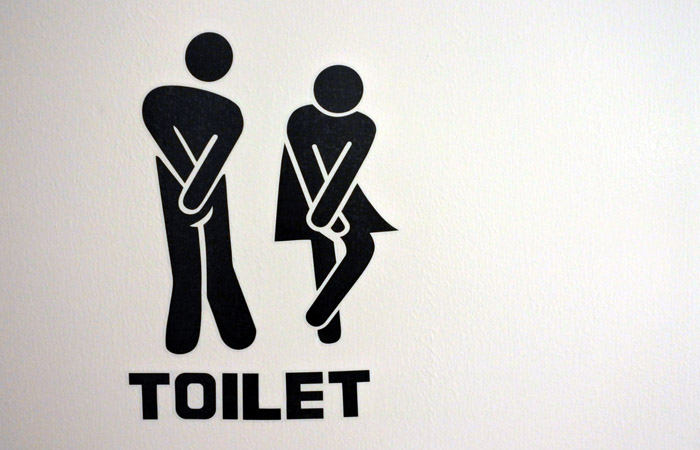Don't be caught short
In Conditions
Follow this topic
Bookmark
Record learning outcomes
With as many as nine million people experiencing some form of bladder weakness in the UK, there’s plenty of opportunity for pharmacy teams to offer support and advice
Bladder weakness, or urinary incontinence, is a hugely sensitive subject and while some people might laugh off having an ‘accident’, many simply don’t discuss it at all.

An estimated one in three women and one in four men are affected by bladder weakness. Although this problem is common, it can have a serious impact on the daily lives and wellbeing of sufferers. Despite this, according to the British Association of Urological Surgeons, as many as 60-80 per cent of people with urinary incontinence have never sought medical advice. This is because more than a third of people assume the condition is a normal part of the ageing process, while others may simply be too embarrassed to talk about it.
Donna Wilson, TENA training and brand manager, says there is a huge opportunity for pharmacy staff to help not only the customers who are suffering in silence but also those who are too self-conscious to seek advice and may be using inappropriate products to manage their condition.
Penny Rea, pharmacist at Drybrook Pharmacy, a healthy living independent pharmacy in Gloucestershire, agrees, saying: “A lot of people are reluctant these days to seek help for something like this from the GP surgery because they are always so busy. So they are often relieved to find that the pharmacy can offer helpful, friendly advice.”
Bladder weakness explained
Bladder weakness can occur at any age, but it is more likely to develop as people get older. There are a number of different types of incontinence but the two most common are:
Stress incontinence. This is the involuntary leakage of urine at times when the bladder is under pressure, for example when a person laughs, coughs or lifts something heavy. It happens when the pelvic floor muscles that support the bladder are weakened. Risk factors include pregnancy and vaginal birth, menopause, age, obesity, long-term constipation and a family history of incontinence. Stress incontinence can occur in men who have had some treatments for prostate cancer
Urge incontinence. This is the involuntary leakage of urine caused by an overactive bladder. The main symptom is an urgent need to pass urine but not being able to reach the toilet in time. Three in 10 cases of incontinence are due to this condition and it’s more common in women. In many people, the cause is unknown but it can happen following urinary infections, bladder stones, bladder cancer, neurological disease such as stroke or Parkinson’s disease, and obstruction caused by enlargement of the prostate in men. Symptoms can get worse at times of stress and can be made worse by alcohol or caffeine found in tea, coffee and cola.
Other types of incontinence are:
Overflow incontinence. This occurs when a person is unable to fully empty their bladder and causes frequent leaking
Total incontinence. This is when the bladder can’t store any urine at all, causing someone to pass urine constantly or have frequent leaking
Post-micturition dribble. Also known as ‘after dribble’, this is when people experience an involuntary loss of urine soon after going to the toilet, often while readjusting their clothing a few moments after they have finished urinating. It is also caused by a weak pelvic floor.
It’s also possible to have a mixture of both stress and urge urinary incontinence.
Managing bladder weakness
There are a wide variety of products available to help people who are experiencing bladder weakness to stay secure, dry and odour-free both day and night. These range from disposable pads worn inside the underwear to disposable pants that look like regular underwear.
Many women choose to use feminine hygiene products either because they are cheaper or they are too embarrassed to ask for advice on appropriate products for their needs. However, sanitary towels do not provide the same level of protection as purpose-made products. Bladder weakness products are designed to be discreet, fit well to prevent leaks and stay securely in place. They are made from super-absorbent polymers that expand and turn into a gel, which draws the urine away from the surface to help the skin stay dry and prevent soreness. The products come in a variety of sizes, lengths and absorbencies to meet individual needs.
Bladder weakness products are made from materials that have been dermatologically tested to prevent skin irritation and infections and to trap and neutralise odours specific to urine. These factors can help customers feel more confident when wearing them.
Depending on their level of incontinence, customers may need to try different options before finding the most suitable protection. Both men and women often find that using a combination of products offers them the flexibility they require for a range of daily activities and circumstances.
It’s important to highlight that men can purchase pads, pants and different types of masculine shields designed to fit the male anatomy while also providing comfort and discretion. The pharmacy can also offer customers bed and chair pads, barrier skin creams and disposal bags.
Sadik Al Hassan, pharmacist at Well, says: “There are also trends that indicate new technology could see the return of more stylish washable incontinence products, which are more attractive because they look like conventional underwear.”
Donna adds: “It is important that pharmacy teams ensure they keep up to date with product developments and are confident in explaining the benefits and features to customers to help them choose the one that is most suitable for them.”

Self care tips
There are some simple measures that can be recommended which may help improve symptoms. These include:
- Daily pelvic floor exercises. These help to strengthen the muscles around the bladder
- Quitting smoking. Smoking can cause coughing and this puts a strain on the pelvic floor muscles
- Doing the right exercise. High impact exercise like jogging puts pressure on the pelvic floor muscles and can increase leakage. Pilates, which stretches and strengthens core muscles, is a popular exercise for relieving symptoms of stress incontinence
- Avoiding lifting heavy objects to prevent strain on the pelvic floor muscles
- Losing weight, if necessary as this helps to relieve pressure on the pelvic floor muscles and can be very effective at relieving symptoms
- Treating constipation promptly. Straining to empty the bowels weakens the pelvic floor muscles and makes leakage worse. Increasing fibre intake and taking more exercise will help to prevent constipation
- Cutting down on caffeine as it irritates the bladder and can make incontinence worse. Switch to decaffeinated coffee and drink water and herbal or fruit teas. Avoid fizzy drinks, tea, green tea, energy drinks and hot chocolate, as these also contain caffeine
- Cutting down on alcohol as it is a diuretic, which makes people urinate more often
- Drinking plenty of water. Everyone should drink six to eight glasses of fluid a day. Limiting fluid intake makes incontinence worse, because it reduces the bladder’s capacity. It can also cause or worsen constipation
- Eating the right foods. Avoiding spicy and acidic foods, such as curries and citrus fruits, can help as they have the potential to irritate the bladder and make leaks worse.
Pharmacy teams can also signpost customers to further sources of help and information, such as:
Consultation skills
Donna Wilson, TENA training and brand manager, says bladder weakness can be a sensitive topic to discuss – not just for customers, but for staff too. “It is therefore important that pharmacy teams are confident in their knowledge of the condition and can speak to customers with empathy and discretion, leaving the customer reassured that there is nothing to be embarrassed about,” says Donna.
She adds that community pharmacy teams should offer discreet advice and be able to signpost products. Pharmacy staff “should be on the lookout for different people on the shop floor especially for first time purchasers. Also customers may not be buying for themselves but for a relative they are caring for,” Donna explains.
Sadik al Hassan, pharmacist at Well, says a health promotion display of incontinence products and information about how to stay healthy and when to see the GP is a great way of starting conversations with patients on this difficult subject. “But even without a health promotion area you could still have a focus on bladder weakness in your pharmacy to help customers realise this is a recognised condition,” he says.
Penny Rea, pharmacist at Drybrook Pharmacy, says lots of customers come in and just look at the shelves because they are unsure what to buy. “This is an opportunity for pharmacy staff to approach customers and ask them if they would like any help. If they appear to be embarrassed then we offer to take them into the consulting room. This helps to put people at ease and enables them to open up about their worries and fears.
“It’s a good idea to start the conversation explaining that bladder weakness is a common problem – this immediately helps to reassure people. Then it is important to explain about the different types of incontinence and ask how bad the customer’s problem is. You can then go on to talk about the different products and how they work and offer some self care tips to help people manage the condition themselves.”
Stuart Gale, pharmacist and founder of Oxford Online Pharmacy, says: “It is important that pharmacy staff can speak confidently and professionally with patients and offer well informed advice.”
As many as 60-80 per cent of people with urinary incontinence have never sought medical advice
